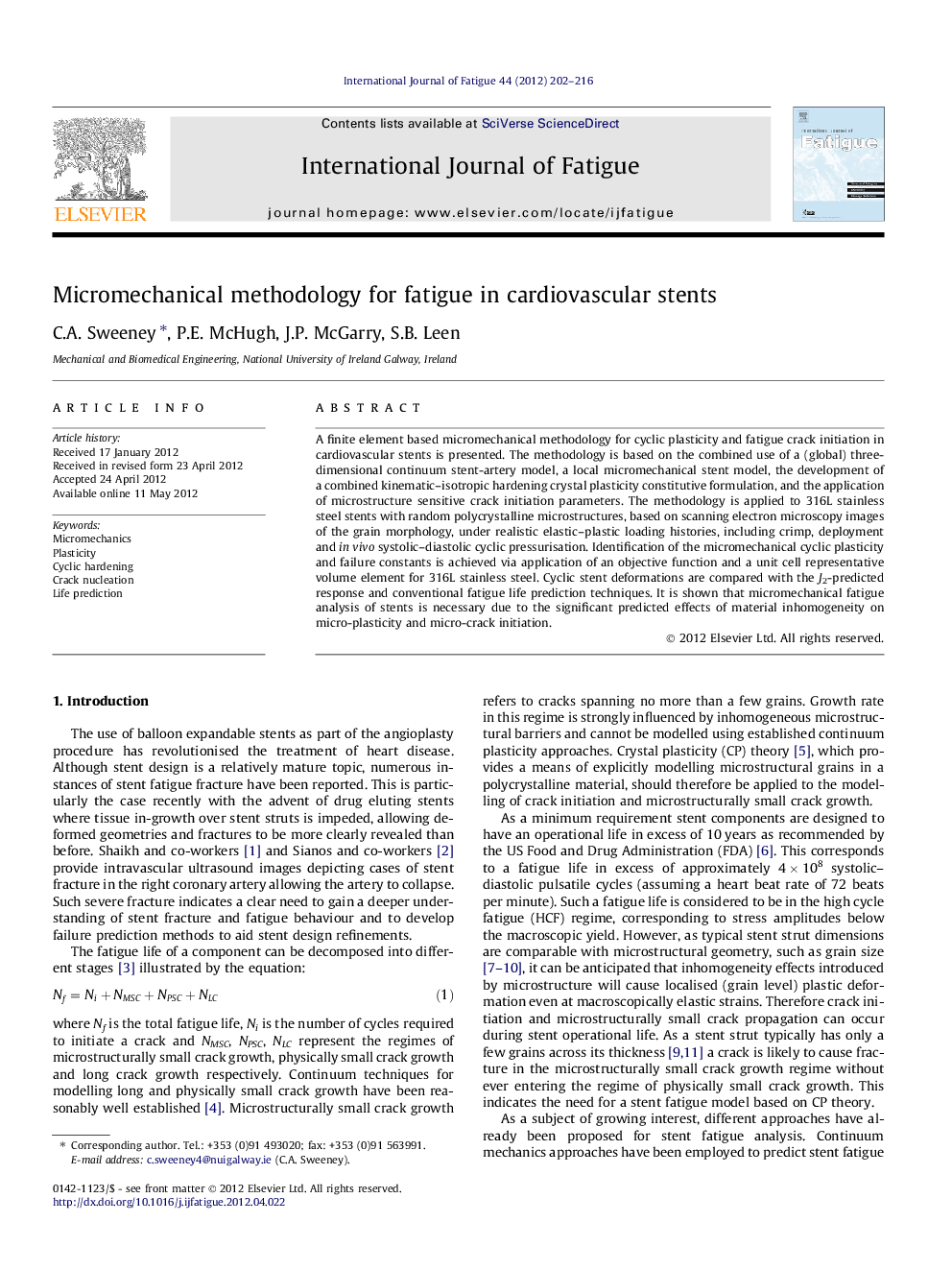| Article ID | Journal | Published Year | Pages | File Type |
|---|---|---|---|---|
| 778316 | International Journal of Fatigue | 2012 | 15 Pages |
A finite element based micromechanical methodology for cyclic plasticity and fatigue crack initiation in cardiovascular stents is presented. The methodology is based on the combined use of a (global) three-dimensional continuum stent-artery model, a local micromechanical stent model, the development of a combined kinematic–isotropic hardening crystal plasticity constitutive formulation, and the application of microstructure sensitive crack initiation parameters. The methodology is applied to 316L stainless steel stents with random polycrystalline microstructures, based on scanning electron microscopy images of the grain morphology, under realistic elastic–plastic loading histories, including crimp, deployment and in vivo systolic–diastolic cyclic pressurisation. Identification of the micromechanical cyclic plasticity and failure constants is achieved via application of an objective function and a unit cell representative volume element for 316L stainless steel. Cyclic stent deformations are compared with the J2-predicted response and conventional fatigue life prediction techniques. It is shown that micromechanical fatigue analysis of stents is necessary due to the significant predicted effects of material inhomogeneity on micro-plasticity and micro-crack initiation.
► A novel micromechanical fatigue crack initiation model for stents is presented. ► Importance of size-scale consistency between failure and constitutive models shown. ► Microstructural fatigue parameters predict realistic scatter for crack initiation. ► Conventional continuum techniques yield unrealistic scatter in life predictions. ► Crystal level kinematic hardening needed to model cyclic strain energy dissipation.
